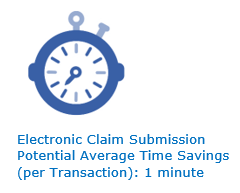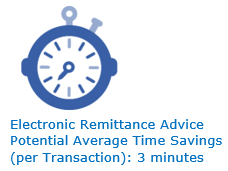
As a revenue cycle consultant for Zimmerman & Associates in the early 90s, I served as an analyst for the HARA report. For those of you who started your career after it was in circulation or don’t recognize the name, HARA stood for Hospital Accounts Receivable Analysis. At the time, it was the industry-leading publication that discussed healthcare billing best practices and trended major KPIs. Which brings me to my reason for this article - the GDRO benchmark (Gross Days Receivable Outstanding) for a superior performing hospital at the time was anyone reporting 60 days or less.
Revenue Cycle Matters Tip: To calculate GDRO, divide your gross A/R by your average daily gross patient revenue.
Fast forward almost 30 years and I still spend my days working to ensure hospitals are paid for the services they provide – although now I don’t just consult about it, I actually have to DO it as our company manages billions in client A/R. What amazes me is that consultants are still touting that as long as your days are under 55, you are doing just fine - AN IMPROVEMENT OF ONLY 5 DAYS IN ALMOST 30 YEARS!
How can it be that over this 30 year time-frame we’ve improved the GDRO target by only 5 days?
In those same three decades, we’ve seen a nearly complete transition from manual claim processing to electronic claim processing.
To day an estimated 96% of medical claims are being submitted electronically according to the 2018 CAQH Index and nearly 50% of remittances are processed electronically (efficientC clients receive over 90% of their remittances via 835s).
day an estimated 96% of medical claims are being submitted electronically according to the 2018 CAQH Index and nearly 50% of remittances are processed electronically (efficientC clients receive over 90% of their remittances via 835s).

These figures indicate a very high level of automated processing and therefore a significant reduction in administrative time for billing teams.
Additional electronic processing improvements in the areas of eligibility verification, prior authorization, status inquiries, and even claim payment have also seen respective efficiencies gained.
Shouldn’t these gains translate into us getting faster payments and GDRO in the 30s or 40s?
The community of healthcare providers using efficientC as their clearinghouse to submit claims has an average payment turnaround time of about 17 days from time of billing to payment across all third-party payers. The large payers are even faster!

Back in the days of paper billing (the 90s), payment turnaround time was 30-45 days. So with payment turnaround times increasing by 25-30 days, the expected GDRO improvement of only 5 days requires a little soul searching.
Do you know how long it takes from date of service for a claim to drop to your clearinghouse?
We really can’t control how long it takes payers to pay – let’s use Medicare as the example. You will get paid in 14 days and there is nothing we can do about it. What we can control is how long it takes us to get that first claim out to the payer. The data we have been collecting for almost 10 years shows it takes providers as long to bill the payer as it does for the payer to pay.
 If it takes an average of 17 days to bill a claim and 17 days for payers to pay – we’ve got 34 days of GDRO sitting on the books right off the bat. Focusing on getting claims out within 7 days at least gets us at a nice starting point of 24 days.
If it takes an average of 17 days to bill a claim and 17 days for payers to pay – we’ve got 34 days of GDRO sitting on the books right off the bat. Focusing on getting claims out within 7 days at least gets us at a nice starting point of 24 days.
Then in addition to increasing the efficiency of the above processes to ensure timelier claim creation, there are two other areas to work on when fine-tuning your payment cycle: your claim scrubber and your denial management tool.
How to best utilize the revenue cycle systems at your disposal to improve GDRO?
You have to remember that we only get paid fast if we bill the claim correctly according to the payers’ specific requirements. This is why I routinely declare the claim scrubber as the most important technology in the revenue cycle – you must be militant about editing your claims against the ever-changing payer rules in order to achieve optimal payment turnaround.
A good claim scrubbing system uses intelligence gleaned from denial data to constantly update claim edits, which increases first pass payment rates. It helps with identifying the root cause of denials so you can implement policies to support proper billing practices for your staff, and when appropriate allows you to create automated rules to eliminate unnecessary claim touches.
Sub-par claim scrubbers operating in a silo without integration to denial data will hold you back and potentially put your hospital in financial distress. Unnecessary denials are one of the leading causes for A/R aging issues and write-offs. They can also create a lot of extra work. Within the past 18 months, I’ve been to several facilities where systems had outdated edits that still required staff to manually track and add therapy units to Medicare claims. I felt bad explaining to them that Medicare hasn’t required that since 2010. They had been reviewing every therapy claim for that long and it wasn’t their fault. Their clearinghouse partner at the time failed them by not making the necessary updates to their system.
With your claim scrubber and denial tracking tool working in harmony, you can use your newly discovered staff time to work on more strategic tasks like denial prevention! Once your team reaches this stage, you gain the insights and evidence to start making corrections further upstream in your revenue cycle.
One of our core company values is Never Mediocre, and I implore you to start thinking that way when it comes to your GDRO and revenue cycle management strategy as a whole. With the right processes and tools in place, there’s no reason you can’t raise the expectations of your GDRO. Get your bills out in 7 days and keep your first pass payment rate over 90% by submitting claims that meet the payer requirements and your GDRO should be in the 30s or 40s (barring any unique payer issues).
Choose Denial Prevention
We built the efficientC software with the sole purpose of improving A/R performance – which includes GDRO, cash flow, aging, and write-offs. That’s a lot to ask of a “clearinghouse” and it doesn’t make our Client Experience team’s job easier, but it makes our clients happier. Let us show you how we do it and why we’re different.
If you’d like to learn more and see how efficientC could help reduce your GDRO, get in touch here or send an email to efficientC@os-healthcare.com with a few times to connect!
For more revenue cycle management insights and collections best practices, make sure you check out and subscribe to Revenue Cycle Matters.
Related Posts
Revenue Integrity in the Business Office
efficientC: Your Partner in Revenue Integrity
Revenue integrity is a phrase used across many...
Rural Revenue Cycle Management Denials: Why They're Increasing and What to Do About It
Denials Are on the Rise—And Rural Providers Are Feeling It More Than EverFor rural healthcare...
The Cure for Revenue Cycle Leakage
Rural hospitals can’t afford revenue leakage, and while most CFO’s might have an idea about the...
